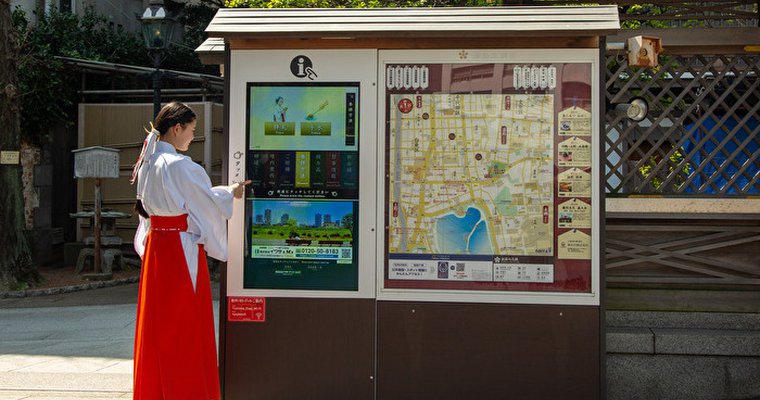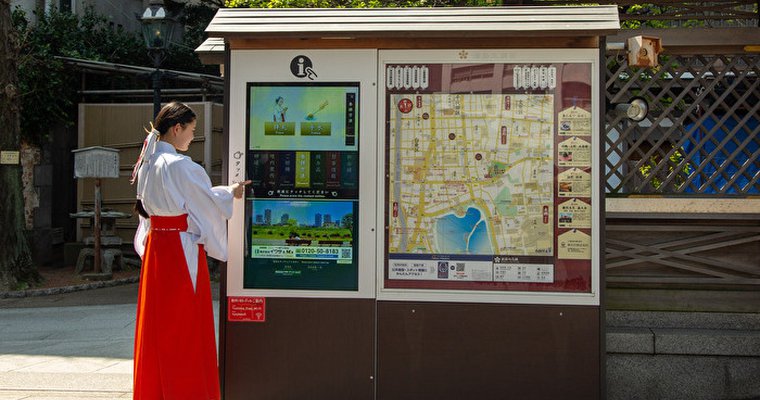For a very long time in our history, humans have been solve the problem of not knowing where to go. Moving around in a unknown area started is difficult, and navigation help started with simple roads that people could follow to get to a location, but has since ballooned into one of the largest networks on the planet, with planes, trains, buses, and cars moving people from one place to another with ease.
With the rise of computers, GPS, and smartphones, getting directions and finding your way have never been easier. In developed countries, basically anyone can find out how to get from one place to another, so the problem of moving from one place to another is slowly being phased out. The problem now, is people getting lost within one place.
This is where digital wayfinding steps in. In large buildings like airports or warehouses, or events like large scale conventions, people often struggle to find their way around. Layouts can be convoluted and confusing, and traditional signs may not be as descriptive or precise as people need them to be. Digital wayfinding, on the other hand, is a technology driven innovation for the traditional signs and navigation assistance that promises to be more effective and more adaptable for individuals.

Digital wayfinding will allow travel guides to adapt to every individual, making moving around easier and removing stress for many individuals. The key aspect of the service is its ability to be tailored to a single person. For example, if someone is looking for a certain company at a job fair, they will need to consult the map, and walk up and down the aisles to find the company they are looking for, which can cause unnecessary stress. With digital wayfinding, however, the person may download and app or scan a QR code, and this will give them a map leading directly to the company that they are looking for, cutting down on potential stress and time spent attempting to find what a person needs.
Digital wayfinding could also be used in E commerce and has been to an extent. Tools to help customers easily navigate websites have already been implemented on many sites, like back arrows, hubs, categories for products and things along those lines. Companies have also started to personally tailor the navigation on their websites, with companies adding aspects like “top products for you” and recommended products based off what’s in your cart. While companies have already begun implementing digital wayfinding onto some websites, there is still more work to be done, as navigating large websites can often be a hassle and confusing, and can take away from the experience on the website. Having a cluttered or confusing website will be a perpetual problem for companies in the future, and digital wayfinding will be one of the key tools in fighting that.
The future of digital wayfinding, at least from a service perspective, is in smartphones and devices. Making it easy to access digital maps on your phone is extremely useful in making digital wayfinding accessible to more people than ever, and building on this technology could make the process more appealing and cheaper. Another key for the future of digital wayfinding are devices as opposed to phones. Having small smart devices that can offer navigation to customers can be extremely effective in some areas, such as museums, where a small, cheaper, phone like device could take you through the exhibit and explain the history, and then can be returned and reused after. This style of wayfinding has already been implemented at some museums and the response has been generally positive.
Digital Wayfinding Price
One of the main problems facing the digital wayfinding industry and its expansion is price. Affordability is cited as the number one issue with digital wayfinding, as many potential users of this service may see the idea as too expensive. Technology is inherently expensive, and many groups simply do not see much value in replacing a piece of paper or poster that gets the job done well enough with piece of technology that will work better but be much more expensive. However, for companies or groups that pride themselves on customers service, digital wayfinding is the best way to make sure that your clients do not get lost or confused while in your store or on your website.
Because of this, the real key to the future of the digital wayfinding industry is not smart devices, but affordability. Companies that offer digital wayfinding must look for ways to cut costs and lower the price of it to something more appealing to business directors. Thankfully, Wyoming Investor is planning on launching an affordable digital wayfinding strategy in the near future, which will allow companies to implement digital wayfinding into their operations without the egregious cost associated with the service, as they plan on offering strategies based on the clients budget, making it affordable for anyone.
[ssba-buttons]
